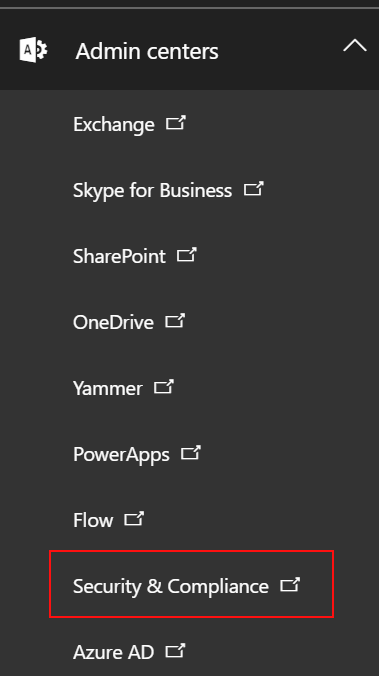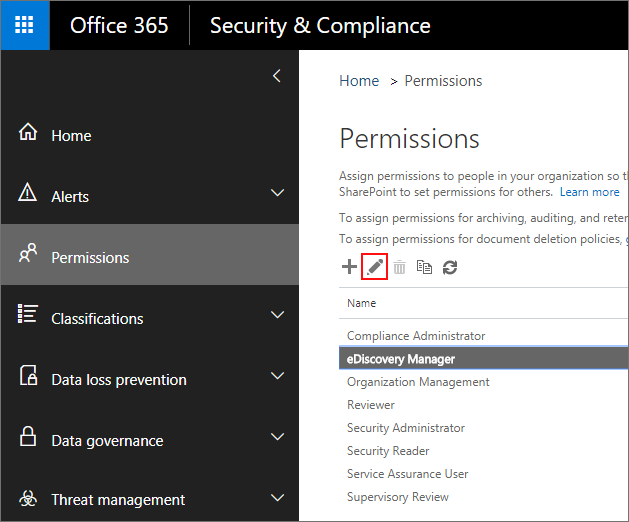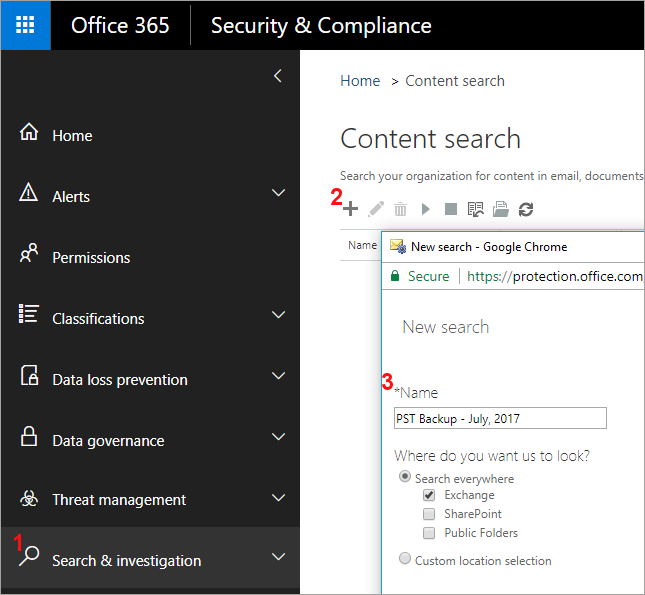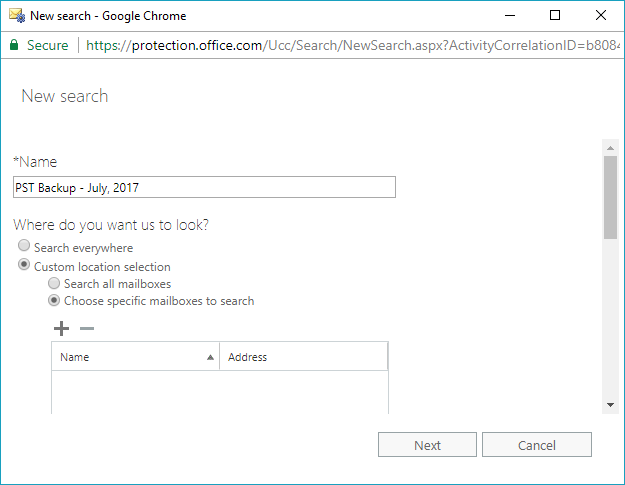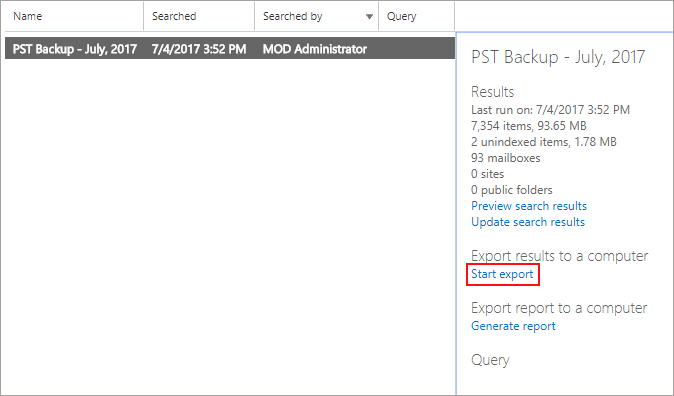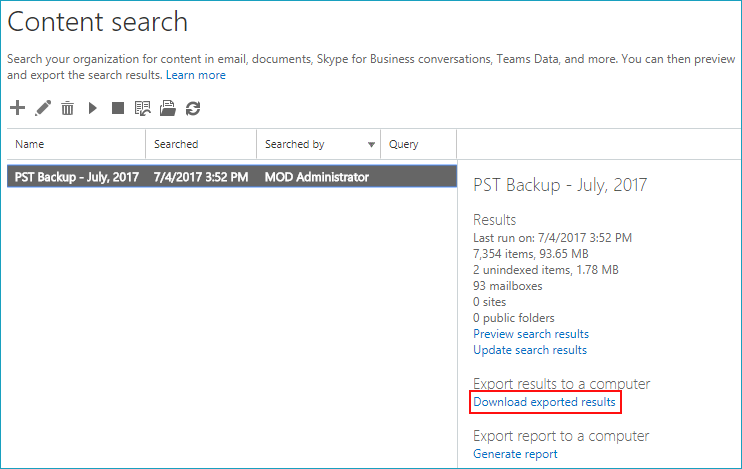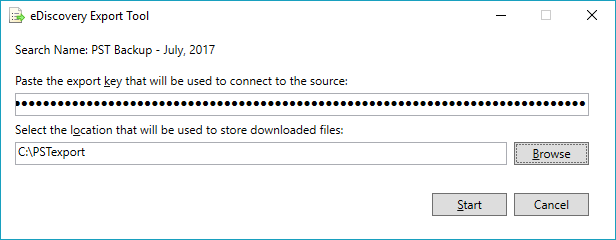To totally unlock this section you need to Log-in
Login
In this article, we are going to show you how to export Office 365 mailboxes to PST files using an Office 365’s native in-place eDiscovery mechanism as a workaround.
The reason why you may need to use it is that Microsoft doesn’t provide any tools dedicated specifically for this purpose (like the New-MailboxExportRequest cmdlet in on-premises Exchange). In fact, if you want to export mailboxes to PST files to e.g. add a layer of extra protection to your Office 365 data or migrate away from Office 365, the eDiscovery mechanism is your only option, other than opening the mailboxes in Outlook and using its Import/Export functionality.
IMPORTANT: eDiscovery is supported in all Exchange Online plans and in selected Office 365 plans. Note that this solution can also be used in Exchange 2016 and 2013.
System requirements
- 32 and 64-bit versions of Windows 7 and later versions.
- Microsoft .NET Framework 4.5.
- Internet Explorer 10 and later versions, or Mozilla Firefox or Google Chrome, with the ClickOnce add-in installed.
As already mentioned, this is a workaround, so most of the below steps are going to be related to setting up in-place eDiscovery. The PST export comes at the end (it is performed via a ClickOnce application).
Steps to export Office 365 mailboxes to PST using eDiscovery
In the Office 365 Admin center after logging in to your Office 365 portal, access the Security & Compliance Center as shown in the below image.
In your Office 365 admin center, expand Admin centers and click Security & Compliance.
In your Security & Compliance center, go to Permissions and edit eDiscovery Manager role group.
This and the next step are necessary because you need to be a member of the eDiscovery Manager role group to be able to use eDiscovery features.
In the eDiscovery Manager role group properties window, add your account to the eDiscovery Administrator list using the plus button and click Save.
The role group normally has the following roles assigned: Case Management, Compliance Search, Export, Hold, Preview, Review and RMS Decrypt. In some cases, the Export role is missing. If that is the case, make sure you add it using the plus button.
Now go to Search & Investigation, click the plus button to start a new Content Search wizard, type in a name and click Next.
IMPORTANT: If you are missing the + button, it is most likely related to the eDiscovery permissions you set in the previous steps. Changes in the eDiscovery permissions might take even up to 24 hours to apply. 24 hours after you set the permissions (or less, in our case it was around an hour) the tool should work just fine. The issue with permissions might also result in the lack of the download button in below step.
If you want to export data from all mailboxes, select Search everywhere and tick Exchange.
Or select specific mailboxes using the Custom location selection option, and then clicking the plus button. This will open a new window – highlight the mailboxes and/or SharePoint sites you want to export data from, click Add -> and OK.
Additionally, you can enable exporting from Public folders by checking the Search all public folders option (in the Public folders section at the bottom of the window).
The next step gives you several filtering options (unless you want to export all data, in which case do not change anything):
- Keywords/phrases (separated by logical operators: AND, OR, NEAR, NOT, etc.).
- Time ranges.
- From/To/CC/BCC fields.
- Message types (which can be defined in the window that opens when you click the select message types... button).
After clicking Search, the wizard will perform the search in the background. When it finishes click Start export.
In the window that pops up, you can choose if you want to include encrypted files.
You can also decide how to export the Exchange content. We find the default options to be the most reasonable for a backup – each mailbox has a separate PST file, which makes recovery a bit easier if necessary. When you are finished, click Start export on the bottom of the window.
The wizard starts to export data. You can either wait for it to finish, or click Download exported results right away. If you start to download the results before the export is completed, the download and export tools should finish at the same time.
In this window, a special export key is generated. Remember to copy it, as it will be required in the ClickOnce application that will start in the next step.
A ClickOnce application called eDiscovery PST export tool will start. Paste the export key copied in the previous step. Next, point it the export tool to a folder where you want to save the PST files.
Do not check the Enable deduplication option, unless you want the search results to be exported to a single PST file.
After you click Start, the tool will begin the export. When it completes, close the application.

